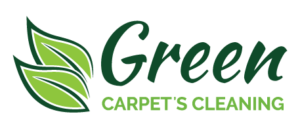Treatment for Rugs with Water Damage
It can be challenging to bring a rug back to its former glory after it has been damaged by water from flooding or leakage. The process of water damage restoration involves the attempt to save rugs that have been damaged by floods or leaks. Hiring professionals is the best choice because they have the knowledge, experience, and tools available to save the people you care about and the things they treasure.
The process could take as little as one afternoon or as long as several days, depending on how long it took between the damage and when it was cleaned up, and how much water was exposed. If a rug has been wet for more than 24 hours, having an experienced technician who is able to complete the task in an effective and efficient manner will save time and limit the amount of damage that has been done to the rug.
The first step in water damage restoration is to remove any standing water. This very important step is carried out right away. Because of the pressing nature of the situation, any potential damage to the property and, depending on the nature of the water, the inhabitants’ health will be preserved. When water is left standing for long periods of time, the risk of bacterial, mildew, and mold growth increases. The danger posed by water damage in the basement is heightened by the presence of humidity, which is normal in that environment. The chances of bacteria, mildew, and mold growing are increased by humidity by a factor of two.
Step 2 After the water has been removed, the technicians will begin the process of salvaging. Items that were damaged by flooding need to be removed and checked for signs of cross-contamination and mold. Carpets and upholstery can both be cleaned and disinfected by a company that specializes in carpet cleaning.
The technicians will search for saturating areas that aren’t obvious. Sometimes floodwaters find their way into the structural components of a building such as the wood, drywall, and side beams. The water causes havoc in the form of cracking, warming, discoloration, and the emission of musty odors. All of these effects are caused by the water.
The deodorization and sanitation processes of Step 3 address the issue of cross-contamination, which not only leads to mildew and mold but also various cardiovascular and respiratory problems. In order to restore the property to the state it was in before the damage was caused by severe water, everything will need to be cleaned in great detail.
EXAMINE
Carpet cleaners who specialize in the craft are able to investigate the subflooring and the padding beneath the carpet. After the drying process is finished, you should consider replacing the padding if it has become completely soaked through. Padding is significantly more dense than carpet and requires more time to dry. In addition to that, make it a point to clean any baseboards and walls that the water came in contact with.
CLEAN AS A STEAM
If you hire professionals to clean your carpet or rug, they will ensure that it is completely dry, sanitized, and deodorized after they are done. The carpet will also be given a thorough steam cleaning by professionals, who will do this to prevent the growth of harmful mold, bacteria, and fungi. If any of the carpets have been damaged by potentially harmful black water, then they will need to be replaced. Your professional carpet cleaners are able to dispose of these items in a responsible manner, ensuring that no one is put in harm’s way as a result of their actions. The majority of carpets, on the other hand, can be returned to their original condition.
For more tips and tricks check out Green Carpet’s Cleaning, we offer a Same Day Carpet Cleaning Larkspur service.

